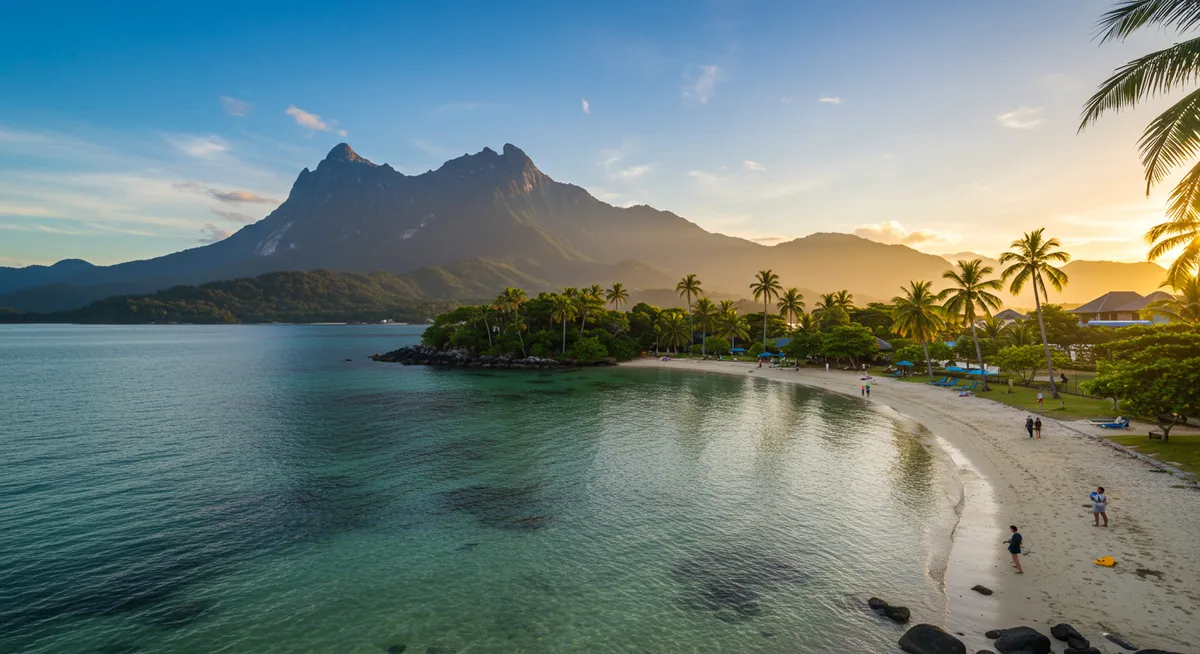
Best Time to Visit Kota Kinabalu Nature 2025 Guide
Table of Contents
Want to find the best nature experiences for this destination? Chat with our nature tourism specialist!
Get Nature TipsCategory: best-time-to-visit-kota-kinabalu-nature-2025
Best Time to Visit Kota Kinabalu Nature in 2025
As an avid nature explorer who has ventured through Borneo's incredible landscapes multiple times, I understand the thrill of planning an unforgettable journey. When considering the best time to visit Kota Kinabalu nature 2025, understanding its unique climate is key. This vibrant Malaysian city, nestled against lush rainforests and pristine islands, offers a wealth of outdoor adventures. From challenging mountain treks to serene river cruises and vibrant marine parks, Kota Kinabalu truly is a naturalist's paradise. Choosing the right season significantly enhances your experience, ensuring optimal conditions for spotting elusive wildlife, enjoying clear waters, or conquering peaks. Let's delve into the seasonal nuances to perfectly time your Sabah adventure.
Unveiling Kota Kinabalu's Tropical Climate
Kota Kinabalu, situated in Sabah, Malaysia, experiences a classic equatorial climate, meaning it's generally hot and humid year-round with two primary seasons: wet and dry. My personal experience confirms that while the temperature remains consistent, rainfall patterns dramatically influence outdoor activities. Understanding this tropical rhythm is crucial for determining the best time to visit Kota Kinabalu nature 2025. Expect average temperatures around 32°C (90°F) during the day, rarely dipping below 22°C (72°F) at night. Humidity is always high, adding to the tropical feel. This consistent warmth makes it a year-round destination, but specific natural experiences are certainly enhanced by drier conditions.
Dry Season: Ideal for Peak Nature Adventures (March - September)
For most nature enthusiasts, the dry season, spanning roughly from March to September, is widely considered the prime window. During these months, rainfall is significantly lower, leading to clearer skies and less humid conditions, making outdoor activities more enjoyable. This period is superb for exploring Kota Kinabalu's diverse ecosystems and truly immersing yourself in the natural world. From jungle trekking to observing fascinating biodiversity, the dry spell offers unparalleled visibility and comfort. I've found this time perfect for island hopping and snorkeling in the crystal-clear waters of Tunku Abdul Rahman Park, where marine life thrives, and for exploring the vast array of Kota Kinabalu nature attractions without weather disruptions.
Wet Season: Lush Landscapes & Unique Experiences (October - February)
While labelled the "wet season," from October to February, this period doesn't mean continuous downpours. Rather, it typically involves heavier, shorter showers, often in the afternoons. The upside? Fewer tourists, more competitive prices, and incredibly lush, vibrant landscapes. For those passionate about rainforest flora and unique wildlife, this can be an enriching time to visit. The air feels fresher after a rain, and waterfalls are at their most spectacular. A particular highlight I recommend is a Proboscis monkey river cruise Kota Kinabalu, as these magnificent creatures are often more active and visible along the rivers when the environment is wetter. Embrace the occasional rain shower; it's part of Borneo's natural charm.
Climbing Mount Kinabalu: A Separate Consideration
Climbing Mount Kinabalu, Southeast Asia's highest peak, requires its own weather considerations, irrespective of other Kota Kinabalu nature activities. While it's technically possible year-round, the drier months of March to September offer the safest and most enjoyable climbing conditions. During the wet season, trails can become slippery and challenging, with increased risks of rockfalls and reduced visibility, especially at higher altitudes. Having personally ascended this majestic mountain, I can attest that clear skies at the summit are an experience unlike any other, offering breathtaking panoramic views. Therefore, if climbing is your primary goal, target the dry period and consult a comprehensive Mount Kinabalu climbing guide for detailed planning.
Essential Tips for Your 2025 Nature Trip
Regardless of when you decide to visit Kota Kinabalu, a few planning tips will ensure a smooth journey. Always pack light, breathable clothing suitable for humidity, along with rain gear even in the dry season—tropical weather can be unpredictable. Factor in flexibility for potential weather changes, especially if your itinerary includes boat trips or extensive treks. Booking popular tours and accommodations well in advance, particularly for 2025's peak dry season, is highly advisable, as spots fill quickly. Remember, every season offers unique opportunities to engage with Borneo's incredible biodiversity and embark on unforgettable nature adventures around Kota Kinabalu.
Frequently Asked Questions
Is it always hot in Kota Kinabalu?
Can I climb Mount Kinabalu during the wet season?
What unique wildlife can I see in Kota Kinabalu's nature?
Deciding the best time to visit Kota Kinabalu nature 2025 ultimately depends on your priority activities. Whether you seek sun-drenched island excursions during the dry season or prefer the lush, less crowded rainforests of the wet months, Kota Kinabalu promises a truly immersive natural experience. Embrace the tropical climate and the unique opportunities each season presents for exploring this ecological hotspot. With proper planning and an adventurous spirit, your journey into Borneo's wild heart will be unforgettable. Start researching your specific tours and accommodations now to secure your perfect 2025 nature escape!